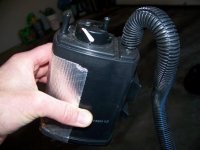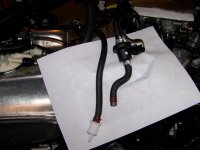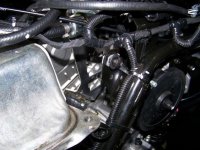spacetiger
New member
Forgot to mention the heat affect on the other parts like rubber [vacuum] hoses and electrical lines. I really wish Can Am went with double walled exhaust pipes for those pieces under the bodywork.
Jerry
Jerry
Forgot to mention the heat affect on the other parts like rubber [vacuum] hoses and electrical lines. I really wish Can Am went with double walled exhaust pipes for those pieces under the bodywork.
Jerry
That would be the catalytic converter... :thumbup:
Are you going to wrap your pipes, after you have them coated?
And now I understand where the heating problem comes from. I'm sorry did not realize they had a Cat on a Syder. If you remove it does it void the warranty?
YOU CAN INSTALL THE ISCI FAN CAN ON THERE AS WELL THIS WILL ALSO HELP REDUCE THE HEAT ON YOUR FEET WHEN YOU ARE SITTING AT IDLE AND WHEN THE FAN KICKS ON
They do not make one for the 2013.YOU CAN INSTALL THE ISCI FAN CAN ON THERE AS WELL THIS WILL ALSO HELP REDUCE THE HEAT ON YOUR FEET WHEN YOU ARE SITTING AT IDLE AND WHEN THE FAN KICKS ON
I may explore adding a drive belt idler to tame the mild (but not insignificant) vibration sensed in the floorboards at certain RPMs.
I'd like more (and more accessible) power points. They'll be added over time.
You've made quite a quest of making these improvements to your 2013 RT. No doubt a lot of time, effort and money spent. My question is this, would it be better for me to just pay more up-front and get a 2014 and hope BRP has the issues fixed? Or get a 2013 at a discounted price (maybe even a low mileage used one) and tackle the mods as needed? Much is being done by owners such as yourself and being posted in this forum. What you are learning and doing would be valuable to owners who feel "stuck" with their 2013 Spyder RTs. I'm just wondering from my perspective of not being a Spyder owner yet as to what would be the best "bang for the buck". I admit that I am leaning towards the 2014 but better information will come as the early adopters find out how their Rydes perform long term.
"PCV with AutoTune - To make sure I don't run too lean with the cat removal and Akrapovic, I'm adding the PCV - which I have past experience with. Also hearing that the rear cylinder can run leaner than the front, I'm adding the dual channel AutoTune so that each cylinder can be mapped independently."
Could you please explain just what this is for me. Not sure that I understand just what you are doing. I plan to do some mods to my :spyder2: as soon as I can get back in the shop. The removal of the CAT looks like it will make the list, so I would like understand this to the full.
Thanks for all the help your giving to us all. I love my :spyder2: and plan to keep my 2013 for a nice long time. So the better it runs the more I'll like it.



